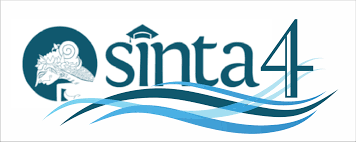SCIENCE LEARNING MEDIA IN GRADE VI: AVAILABILITY, USAGE, AND EFFECTS ON ACADEMIC PERFORMANCE
Abstract
This research investigates the multifaceted dynamics surrounding the utilization of science learning media in Grade VI classrooms, focusing on their availability, patterns of usage, and subsequent impact on academic outcomes. By employing a quantitative descriptive research design, data were gathered through surveys, questionnaires, and interviews with science teachers. The study, innovative in its application of the RASCH Model, revealed a positive correlation between the use of science kits and students' UN Science scores. Noteworthy findings include the prevalence of science kits, the absence of science practicum laboratories, and the underutilization of available learning media. Moderating factors such as teacher training, urban-rural distinctions, gender-based differences, and teacher experience were also identified. While contributing valuable insights, the study emphasizes the need for future research to address gaps, particularly the characteristics of effective science kits and the perspectives of various stakeholders. This research serves as a foundation for enhancing science education methodologies and creating more effective learning environments in elementary schools.

This work is licensed under a Creative Commons Attribution-NonCommercial-NoDerivatives 4.0 International License.
An author who publishes in the Jurnal Darma Agung agrees to the following terms:
- Author retains the copyright and grants the journal the right of first publication of the work simultaneously licensed under the Creative Commons Attribution-ShareAlike 4.0 License that allows others to share the work with an acknowledgement of the work's authorship and initial publication in this journal
- Author is able to enter into separate, additional contractual arrangements for the non-exclusive distribution of the journal's published version of the work (e.g., post it to an institutional repository or publish it in a book) with the acknowledgement of its initial publication in this journal.
- Author is permitted and encouraged to post his/her work online (e.g., in institutional repositories or on their website) prior to and during the submission process, as it can lead to productive exchanges, as well as earlier and greater citation of the published work (See The Effect of Open Access).













